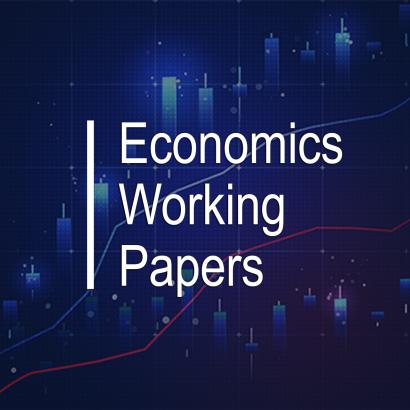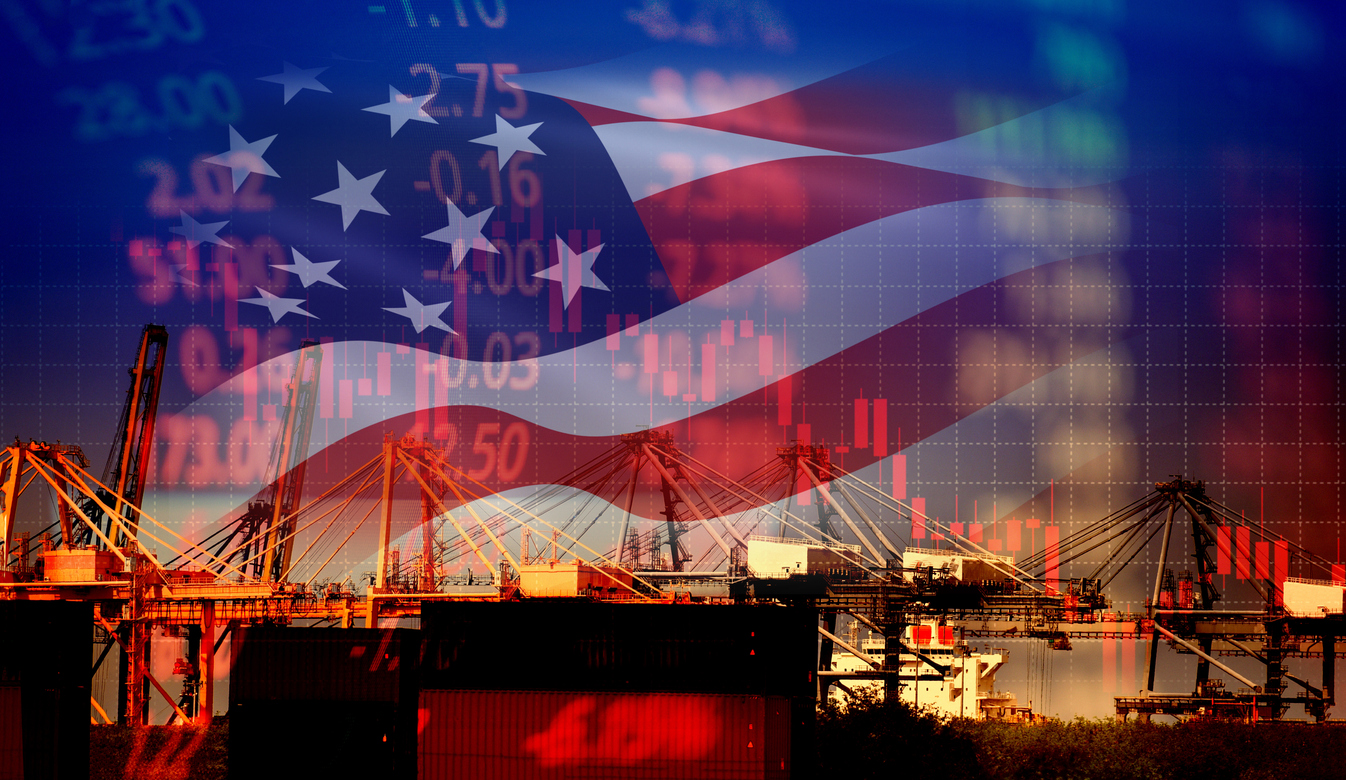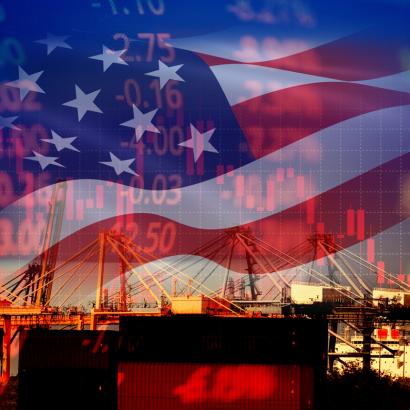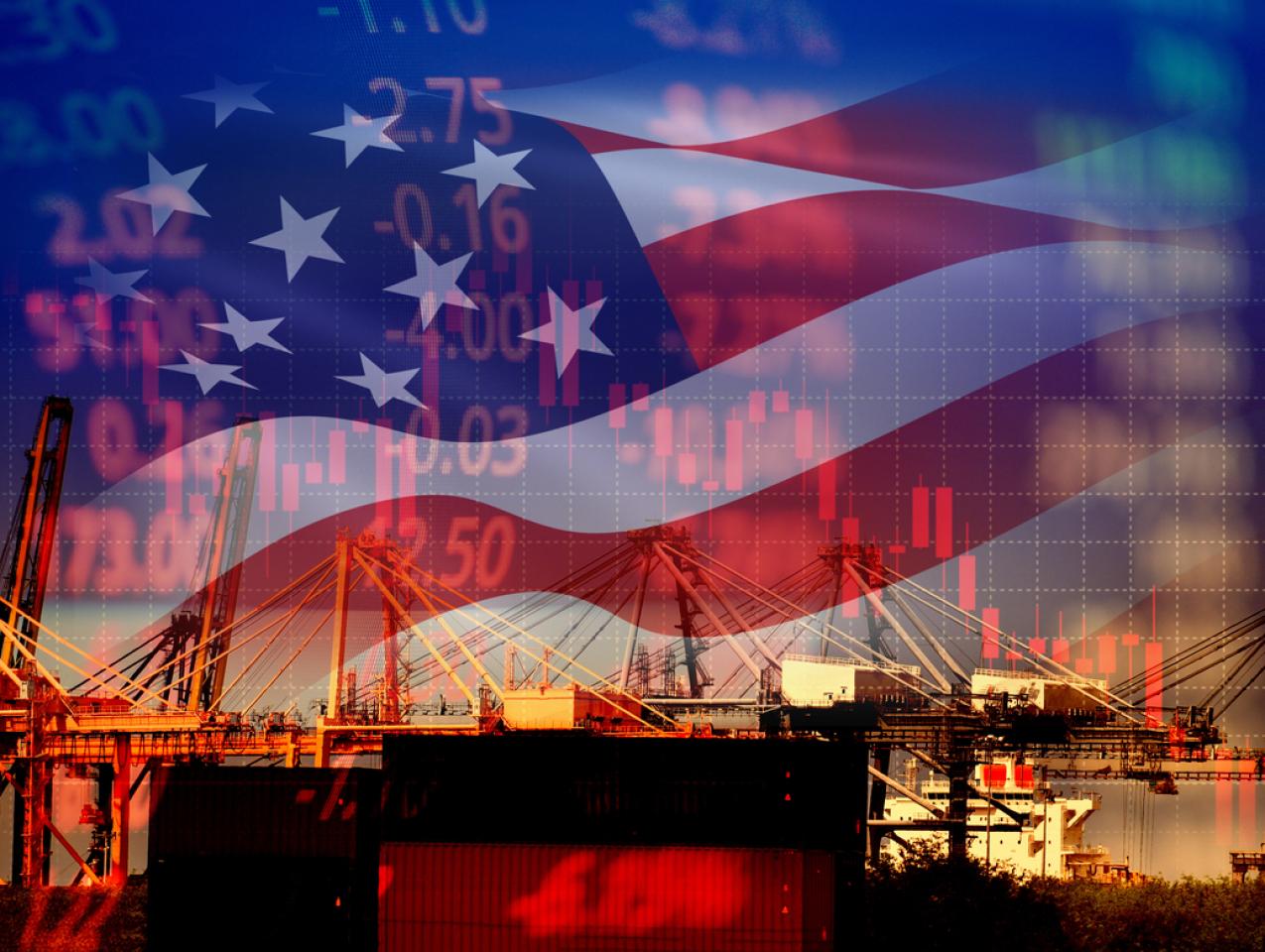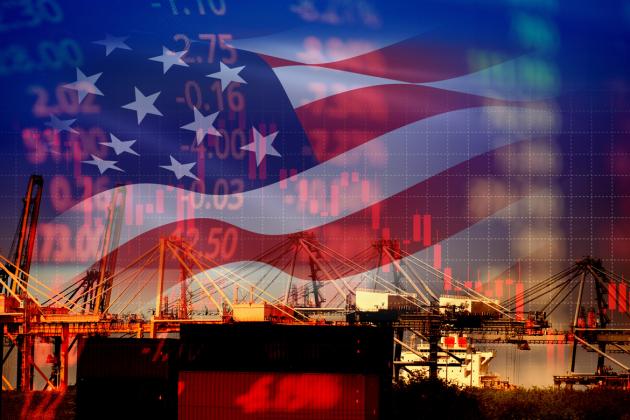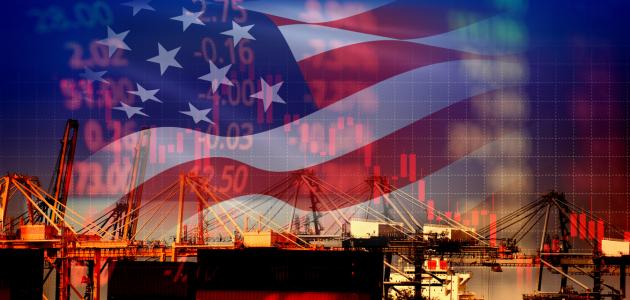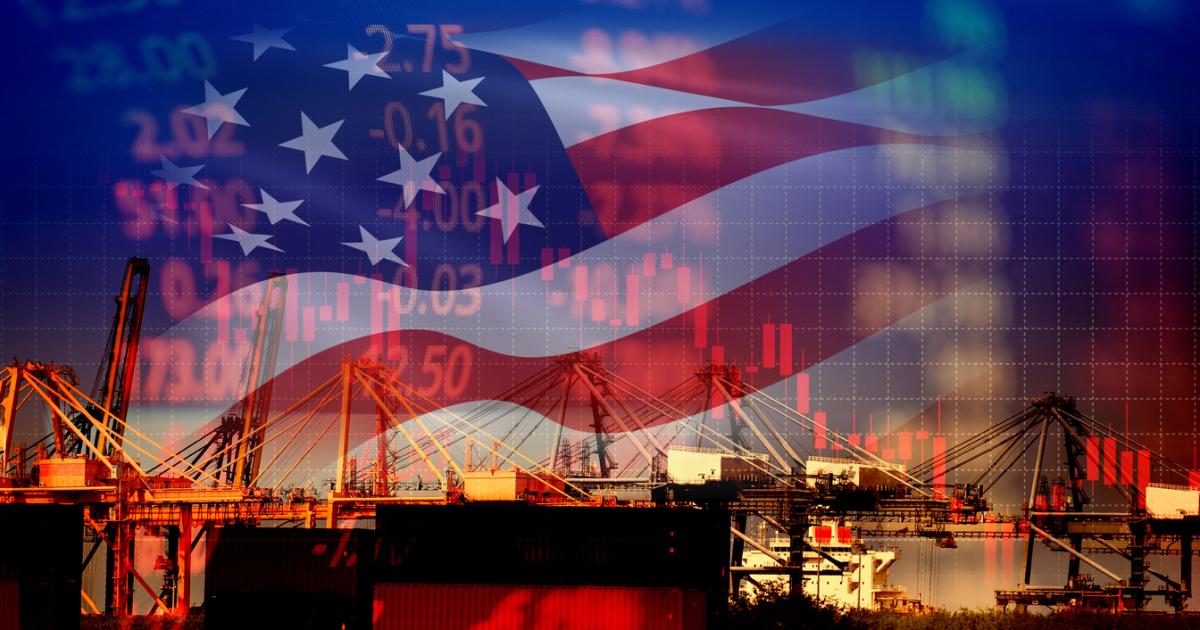- Trade
- The Presidency
- Answering Challenges to Advanced Economies
In an article I wrote just one month into President Trump’s second term in office, “The Benefits of Free Trade Are at Risk,” I noted that since World War II, the world had made relatively steady progress toward free trade. I also wrote:
“[T]he move toward free trade, besides making billions of people more prosperous, was one of the biggest postwar accomplishments in worldwide economic policy and one of the biggest increases in worldwide economic freedom. The tragedy is that some of President Trump’s moves are putting that accomplishment at risk.
That tragedy is coming about. We seem to be headed to a world in which our tariff rates are a multiple of what they were before Trump began his second term. For some countries, notably those in the European Union, tariff rates will be lower than they were before Trump began. That is a victory. But we should be clear about whom it’s a victory for. The main gainers are European consumers, and the secondary gainers are US exporters. The big losers, though, from the high US tariffs, are US consumers and producers who use the tariffed items as inputs, and the secondary losers are foreign exporters.
Not much “winning”
After my February article was posted, I heard from various critics, on email, on my Substack, and in person, that I was being naive. Moreover, critics of other economists who made my same points claimed that those economists were also naive. President Trump had a plan, they said, and we should have little doubt about his negotiating skills. The high tariffs on US imports that Trump was about to threaten to impose were simply a negotiating tool, they said. They argued that Trump’s real goal in threatening such high tariffs was to get other governments to reduce their taxes on our exports. Once he did that, he would drop the tariff rates our government set back to where they were or even lower.
We now see that that’s false. President Trump seems to see it as a victory when he gets other countries’ governments to cut their tariff rates on our exports but he maintains high tariff rates on US imports.
Consider the evidence.
I’ve already noted one big piece of evidence: the deal with the European Union. Here’s what three analysts reported in April of this year:
“Before the trade war, the average US tariff rate on imports from the EU was 1.47 percent, while on EU imports from the US it was 1.35 percent.
That looks pretty close to free trade. But now the United States will charge tariff rates of 15 percent on imports from the EU. The White House fact sheet on the deal, published on July 28, states:
“The EU will remove significant tariffs, including the elimination of all EU tariffs on US industrial goods exported to the EU.
In short, as I noted above, the big winners are European consumers and the big losers are US consumers. The White House fact sheet, of course, doesn’t put it that way. It states:
“[T]he European Union will pay the United States a tariff rate of 15%, including on autos and auto parts, pharmaceuticals, and semiconductors. However, the sectoral tariffs on steel, aluminum, and copper will remain unchanged—the EU will continue to pay 50% and the parties will discuss securing supply chains for these products.
The White House has yet to explain how, when American consumers pay a tariff of 15 percent, somehow, it’s really the European exporters who are paying. Whatever the White House claims, American consumers will catch on quickly, as many of them have. Recall the sad story I told a few months ago about New York dairy farmer Nicholas Gilbert. He expressed upset that he had had to pay a $2,200 tariff on feed from Canada. He had been told, and had believed, that the Canadian exporter paid the tariff.
What about the EU’s pledge to buy $750 billion worth of oil and natural gas by the end of Trump’s second term? Whatever the wisdom of such a pledge, it’s hollow. European Commission President Ursula von der Leyen made the pledge, but she doesn’t control what private firms and individuals buy. As Victor Jack of Politico.eu reported:
““The EU is not a company,” said one gas specialist at a prominent energy trading house. “Will they force EU companies to buy gas and oil from the US?”
I doubt it, and thank goodness. The last thing we need is Europe moving even further towards a government-planned economy.
President Trump has negotiated EU-type deals with the governments of the Philippines, Indonesia, and Vietnam. US consumers will pay a 19 percent tariff rate on goods from the Philippines and from Indonesia, and a 20 percent tariff rate on goods from Vietnam. Consumers in those three countries, meanwhile, will pay a zero percent tariff on imports from the United States. Don’t get me wrong. I’m glad that people in those three countries, almost all of whom are poorer than the average American, will get the benefits of one-way free trade. But I feel bad for Americans who will pay higher taxes. Maybe I really am an American-Firster.
The deal with Japan, on the other hand, is bad for both sides. US consumers will pay a 15 percent tariff rate on imports from Japan and Japanese buyers will pay a 15 percent tariff rate on imports from the United States. So, for both countries, these high tariff rates are a further move away from free trade. In 2023, before Trump was elected to a second term, the average US tariff rate on Japanese imports was about 1.5 percent. This is the so-called trade-weighted measure. Because tariffs vary by item, economists often weight each tariff rate by the dollar amount of the item imported; thus, the term “trade-weighted.” That same year, the average Japanese tariff rate on imports from the United States was 3 percent. (The data in this paragraph are from a ChatGPT analysis, which itself leans heavily on data from the World Trade Organization.)
Comparing 3 percent and 1.5 percent, you can see why a US strategy of proposing even higher tariff rates on imports from Japan could be a useful way to get the Japanese government to lower its tariff rate below 3 percent. But you can also see that what we ended up with was worse for both sides.
Of course, in saying this, I’m taking as given that a move closer to free trade for all countries is a good idea. Here and, more recently, here, I’ve made the case for why that’s true.
And remember that I’m addressing the many people who agreed with me that lower tariffs all around are good, but who also claimed that that was President Trump’s goal. It’s apparent now, given how he is crowing about his accomplishments, that freer trade is not his goal. President Trump has proudly called himself “Tariff Man,” and he has earned the label. I don’t know how sincere he is about his other beliefs. But having followed his views on trade since the 1993 discussions on NAFTA, I’m confident that he does sincerely believe in tariffs.
Does the president do his own laundry?
But should Trump believe in tariffs? I’ll get at the answer indirectly, by asking the following question: does Donald Trump do his own laundry?
We don’t have to look at the White House logs to know that he doesn't. It’s just common sense that it’s not worthwhile for the president of the United States to do his own laundry. He doesn’t even fetch his own Diet Cokes, but, instead, pushes a button to have someone deliver them. His time is just too valuable to be spent on doing things that other people with much lower time value can do.
What have we just done with those two simple examples of laundry and Diet Cokes? We’ve made the case for trade based on comparative advantage. Donald Trump’s comparative advantage is in being president. He’s engaged in activities that he regards as being more important than fetching his own Cokes.
It’s only a small step from that insight to the insight that people in a country should produce the goods and services in which they have a comparative advantage and that they should buy the goods and services for which they have a comparative disadvantage and other people have a comparative advantage.
We show, by our decisions on what to produce and what to buy, where our comparative advantages lie. But tariffs undercut and distort that decision-making. If, say, our auto producers have a 5 percent cost advantage in producing certain kinds of cars, but the US government imposes stiff tariffs on steel and aluminum that turn that 5 percent cost advantage into a 2 percent cost disadvantage, there will be fewer cars produced in the United States.
I don’t expect this reasoning to convince Donald Trump. But that’s not because the reasoning is faulty. It’s because he has held on to his fervent views on tariffs for over three decades.
The anti-subsidy argument
Is there any way to bail out Trump’s belief that higher US tariffs on imports are a win for the United States? One way might be to point out that some governments subsidize their exports to us and that that’s bad. There are two responses to this. First, such subsidies are not as widespread as many people believe. But second, even if they were widespread, why would it be a bad idea for us consumers to accept subsidies from foreign governments? Such subsidies are bad for the taxpayers in the country whose government is subsidizing. But they aren’t bad for the people receiving the subsidies.
As the late Milton Friedman, a Hoover Institution colleague, put it when discussing Japanese subsidies on exports, “If the Japanese government is so ill-advised as to tax its taxpayers in order to send to us, at below cost, TV sets and other things, why should we as a nation refuse reverse foreign aid?”
And someone who, surprisingly, understands this argument is . . . Donald Trump. Here’s what I wrote in “How to Deal With Subsidies and Dumping” on my Substack, I Blog to Differ:
“Discussing the gift of an expensive airplane from the government of Qatar to the Defense Department and then, ultimately, the Trump library, Trump said that it would be “stupid” to turn down a free plane.
If it truly is free, meaning that Qatar’s government wants no favors in return, then he’s right: it’s a good deal. We shouldn’t be so quick to dismiss the idea, though, that there are favors involved. But when you or I accept a subsidized import, the subsidizing government gets no favors from us in return other than the lower price we pay on the item. The subsidy deal might not be clean, but that has nothing to do with us consumers: it’s because of likely cronyism between the foreign government and the foreigner exporter.
What about the argument that when foreign governments subsidize their exporters, they drive our producers out of business and then their exporters jack up the prices? Dealing with the theoretical problems with this argument would take me too far afield. I will point out two important facts, though. First, the evidence that this happens is virtually nonexistent. Second, much of what is thought of as dumping is simply foreign producers having to cut their prices to compete in the highly competitive US market.
The problem with industrial policy
Defenders of Trump’s deal with Japan’s government might point to an offsetting benefit: the $550 billion that the Japanese government has promised to turn over to Trump so that he might invest it in the US economy.
But it’s never a good idea to give any one individual discretionary power to allocate a large amount of money, whether the individual be Trump, J. D. Vance, or a future Democratic president. The deal is Trump’s attempt to implement industrial policy. Industrial policy, recall, is a government policy of overriding people’s free choices to allocate investment to areas that government officials think are worthwhile. But government officials have neither the information (think of Friedrich Hayek’s insights in “The Use of Knowledge in Society”) nor good incentives (the political decision makers’ own wealth is not at stake) to make good decisions. Moreover, it gives the president too much power over people’s lives.
As with most of Trump’s trade and tariff initiatives, the exact details of the deal are not written down. That gives some reason to think that the Japanese government will not come through with the money. And that would be good for the rule of law.
Conclusion
I never believed that President Trump would threaten high tariffs only to get other countries’ tariffs down and then retreat on his own tariffs. I knew too much history about his thinking on trade and tariffs. Some people called me naive for thinking his was simply a protectionist play. I think we know now who was naive.



